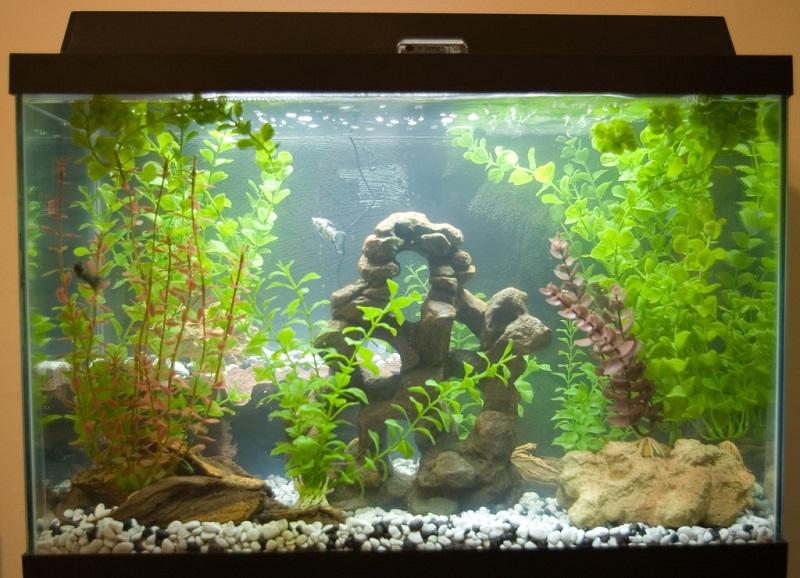 |
| ▲ Those who raise ornamental fish should check the nitrogen circulation to keep the tank healthy (source = Flickr) |
Adequate care is needed to grow ornamental fish in aquariums. In addition to providing nutritious food, you should feel comfortable. The following information is important to know if you are an aquarium fisherman.
Understanding Nitrogen Circulation
The newly installed tank undergoes the process of forming a beneficial bacterial community. The biological process of nitrogen circulation continues to circulate nitrogen compounds such as ammonia, nitrite, and nitrate to treat waste in natural waters. This is very important for managing healthy water tanks. It is also referred to as various names such as circulation or nitrification, biological circulation, and initiation cycle. This process treats waste and maintains ammonia, nitrate, and nitrite at a safe level. It is therefore important to understand that this process has not taken place because it means you can lose your pet ornamental fish.
All wastes discharged by ornamental fish, including prey and corroded plants, are inside the aquarium. If these wastes are not removed, there is a greater likelihood that ornamental fish will not survive. Therefore, understanding the nitrogen circulation method and learning appropriate measures will allow living creatures in the tank to live longer in a more pleasant environment.
It takes three months for the new tank to fully cycle. The following is a basic description of nitrogen circulation compounds that people who grow ornamental fish should know.
1. Ammonia
This compound is colorless, irritating odor, contains nitrogen and hydrogen and is highly toxic. Ammonia, together with ammonia ions, is created by the bacterial erosion of proteins and urea present in the aquarium. It occurs when you feed too much ornamental fish in a tank and feed more than you need.
2. Nitrite
Nitrite compounds are also toxic and are caused by partial oxidation of ammonia compounds or reduction of nitrates. To avoid accumulation of nitrites, you must feed adequate amounts of food and avoid the creation of too much aquarium fish in the tank.
3. Nitrate
Nitrates are largely produced by degradation of animal proteins and ammonium compounds such as feces, food, snails, and plant leaves. Most freshwater tropical fish are tolerant to large amounts of nitrate, but can be maintained by feeding small amounts of ornamental fish in the tank. Adding aquatic plants can lower nitrate levels in the aquarium.
On the other hand, the nitrogen circulation proceeds in three stages, and various problems may occur.
Step 1: The cycle starts from the moment you release the ornamental fish into the tank. In the end, the ornamental fish excrete feces and make food left over. These are decomposed into ionized or non-ionized ammonia. And the ornamental fish are released in the water tank and the ammonia compound starts to increase from 3 days later.
Step 2: In this step, Nitrosomonas bacteria bind to ammonia and begin to remove compounds quickly. However, the product of this combination is toxic to aquatic organisms. Even if the nitrate level is less than 1 mg / l, the ornamental fish may die. This phase begins at the end of the first week when the ornamental fish is released.
Step 3: At this stage, the nitrobacter bacteria turn nitrite into nitrate. Nitrate is not as toxic as other compounds.
Effectively make nitrogen circulation
To make the nitrogen cycle work effectively, the master can grow live plants in the tank. Aquatic plants not only improve the shape of the aquarium, but also make the aquarium healthy. And it can add aquarium fish just by raising underwater plants, and it also provides space for existing aquarium fish. The waste of ornamental fish is decomposed into nitrite and nitrate, which are less toxic in the form of ammonia.
High nitrate levels are not recommended. Living aquatic plants can also consume nitrates as fertilizers for growth, resulting in less nitrate in the water. And it can reduce the birds feeding on plants and breathing with N2.
Proper preparation of water in the bath is effective in maintaining nitrogen circulation. So fill one or two 5 gallon water bottles with water for at least 48 hours without sunshine. After that, you can empty the water from the line that does not exceed 25% of the water in the tank and replace it with the prepared water.
![[Pets] Basic knowledge for cultivating ornamental fish .. ‘Fishery management’ pets basic knowledge for cultivating ornamental fish fishery management](https://moontore.com/wp-content/uploads/2019/02/pets-basic-knowledge-for-cultivating-ornamental-fish-fishery-management-1200x700.jpg)


